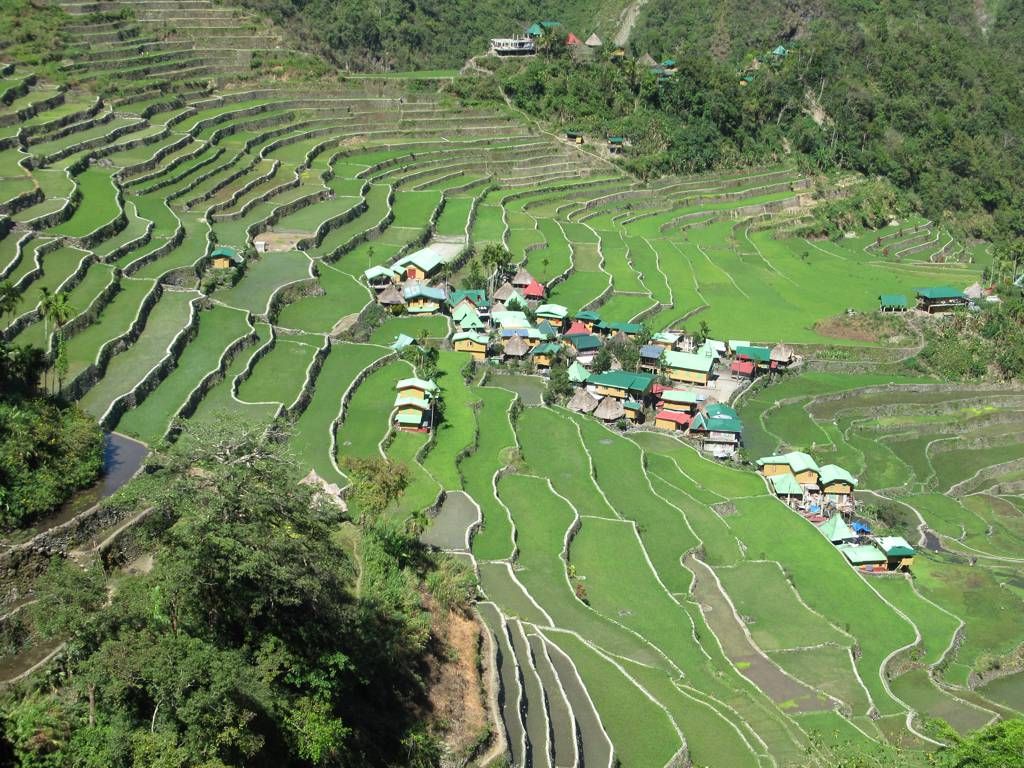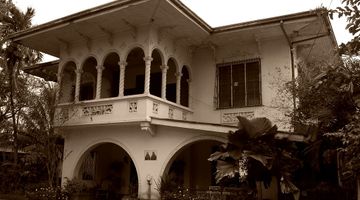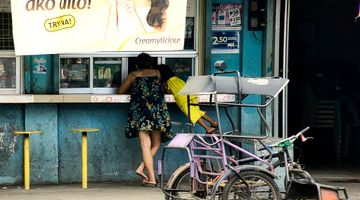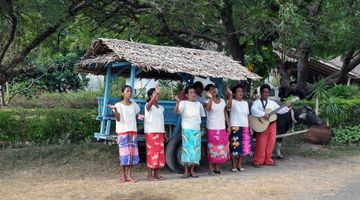Batad Travel Guide
In a nutshell
The astounding beauty of the ancient rice-terraces, the remoteness and the simple, basic living of Batad call to travellers with adventurous souls and sturdy hiking boots; and those who are eager to get off the beaten track.
Why go to Batad
The spectacular, hand-carved rice terraces are obviously the predominant reason to journey to the tiny village of Batad that is largely unaffected by the outside world. We’ve travelled to many places in the world and Batad might well be among the most far-flung place that we have ever been. No Wi-Fi, a village of less than 1,500 inhabitants, no transportation other than your own two feet and only a smattering of places to stay for the night. While that previous sentence might sound like reasons not to visit, this is not the case at all. The temporary isolation from the rest of the world, the calls of nature and the mind-blowing views from any and every angle make Batad an excellent spot to stopover and reconnect with nature and oneself.
As incredulous as this may sound, the rice-terraces of Batad put the gorgeous ones in Banaue to shame and one cannot helping gasping in awe upon first sighting.
Strenuous and demanding hikes are richly rewarded with viewpoints unlike any other in the world and a pounding waterfall of foamy, cascading magic. Tappiya Falls is the stuff of dreams and well worth the 2-hour hike across trails of seemingly endless stairs and the mossy edges of the terraces. Wrinkled, old women with bowed backs crane up from their daily chores to peer up at you as you pass, chickens scratch the ground and dogs lazily blink their eyes and wag their tails. All this combined with the cinematic views, the genuine warmth of the local Ifugaos and the fascinating culture make it a much loved and memorable destination to travel to.
When to go to Batad
If you’re hoping to see the rice terraces at their very greenest then visiting during April and May, as well as October and November would be best. Harvest season in Batad is from July to August and the terraces are a lovely, golden colour during this time. The rainy season begins in July and can continue until January, landslides are common during this time.
Where to stay in Batad
With somewhat few things to do and with the disconnection from the rest of the world, Batad is a short stay destination for most. Accommodation options for visitors of Batad are very basic and are all on a backpacker level. If you demand luxury and extravagance then Batad might not be for you.
However, what the homestays, pensions and inns lack in opulence, they more than make up for in unbelievable affordability, homeliness and uniqueness. The views that greet you from your bedroom window as you open your eyes are straight out of a fairy tale and chirping, little, blue birds helping you get dressed would not feel out of place.
Should you be longing for a more authentic and traditional place to rest your head, then Ramon’s Native Homestay might be right up your alley. An authentic Ifugao hut can be rented for around PHP1800 a night and can sleep 4 people. Regular rooms at Ramon’s can also be rented for a very affordable PHP250 a night.
Because of the few accommodation options, booking during peak season is strongly suggested. Another Batad accommodation feature to take note of - plug points in the rooms of inns and homestays are largely non-existent and common charging stations are provided for guests in most reception areas.
Where to eat in Batad
Due to everything, including yourself, needing to be walked into Batad means that food and beverages are quite a bit pricier than other places within the Philippines. A way around this might be bringing in as much water and snacks as you can carry on your back and saving a bit of cash in this way.
The majority of the food that travellers will most likely eat in Batad will be from the various accommodations. All inns, homestays and pensions have a restaurant attached to their premises. The sheer convenience of this fact will make most Batad visitors sigh in exhausted relief as after a day of strenuous trekking and no local transportation, the last thing your weary legs will fancy is walking to find a hearty meal.
Food in Batad is local, nutritious and simple and it is recommended to stop at one of the many makeshift stores before a day of trekking to stock up on water and easy-to-carry snacks.
How to get around Batad
Getting around in Batad is done entirely on foot and there are absolutely no motorised vehicles anywhere in the village. One foot in front of the other is simply the way that it’s done. Bring a couple of pairs of comfy socks, and hiking shoes that have been worn in, and you’re all set. Hiking guides plentiful in Batad and can be hired for any group size.
How to get to and from Batad
Getting to Batad is not for the fainthearted or unadventurous. First things first, you’ll need to head to Banaue. Banaue can be reached from Manilla by taking a nine hour overnight bus with Ohayami Trans which will set you back PHP600. There is only one daily trip to Banaue from Manilla at 9.30pm and another one at 10pm in peak season. Upon arriving in Banaue you’ll then need to grab a PHP500 tricycle (PHP500- good for 3 people) or a jeepney (PHP3000 – good for 20 people) to Saddle Point.
Sagada being only a province away, means that many travellers merge the two destinations into one holiday. Firstly you’ll need to take a PHP50 jeepney ride to Bontoc from Sagada. Jeepneys tend to drive this route every half an hour from 6:30am to 9am and every hour thereafter. Once reaching Bontoc you’ll need to catch a van headed to Banaue. This will cost you three hours of time and around PHP170 of spending money. The Banaue bound van leaves the Bontoc tourism office three times daily at 8:30am, 10am and 1pm.
As mentioned above, once you’re safe and sound in Banaue (whether arriving from Manila, Sagada or anywhere else), you’ll need to catch a jeepney to a place called Saddle Point. From this point wave goodbye to any and all transportation, Internet and reliable phone signal; and embrace the beauty and magic of the ancient world that awaits. You’ll now need to hike down a steep dirt path with all your luggage on your back for about 45 minutes before you’ll arrive, sweaty and tired at the doorsteps of the inns and pensions.
The Batad Tourism Centre will require a meagre PHP50 Heritage Fee upon arriving. Surrounded by the astounding beauty of the glistening rice terraces you will discover that here in Batad, the journey is in fact the destination.
Is Batad a safe place to visit?
With many children scampering around the village unattended, and the kind, welcoming villagers, it is evident immediately after arriving in Batad that travelling here is fortunately extremely safe. Be mindful of getting back to your accommodation before dark as the steep stairs and edges of the terraces can be dangerous without sufficient light.

































































